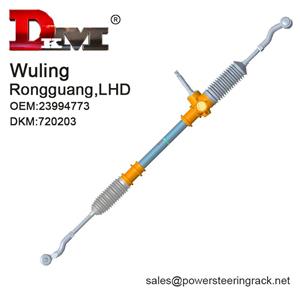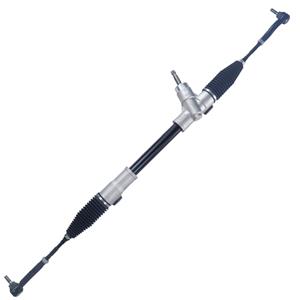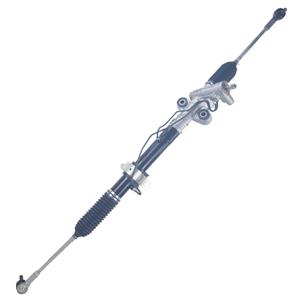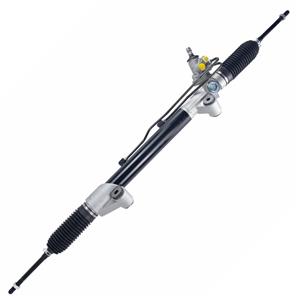Will a damaged steering rack cause inaccurate steering?
In the complex mechanical system of a car, the steering system plays a vital role. It not only ensures that the driver can accurately control the direction of the vehicle, but also directly affects the safety and comfort of driving. As one of the core components in the steering system, the state of the steering rack is directly related to the steering accuracy and reaction speed of the vehicle.
So, will a damaged steering rack cause inaccurate steering? This article will explore this issue in depth, analyze the specific impact of steering rack damage on vehicle control, and how to identify and deal with this fault.
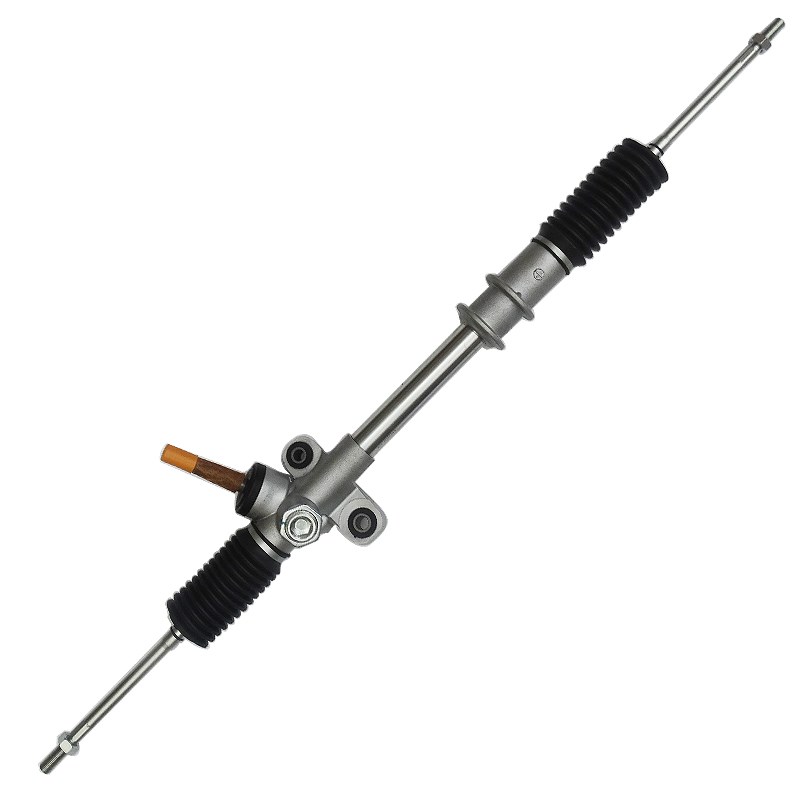
What is a steering rack? What does a steering rack do?
The steering rack, also known as a rack and pinion steering gear, is one of the most common steering systems in modern cars. It converts the rotational motion of the steering wheel into the linear motion of the rack, thereby driving the wheels to rotate and realizing vehicle steering.
How does a steering rack work?
The basic working principle of a steering rack system is that when the driver turns the steering wheel, the steering wheel drives a small gear (gear) to rotate through the steering column. This pinion meshes with the rack, and the rack moves in a straight line under the action of the pinion, thereby pushing the steering rod connected to the wheel, and finally realizing the rotation of the wheel.
● Steering wheel rotation: The driver applies steering force through the steering wheel.
● Pinion rotation: The rotation of the steering wheel is transmitted to the pinion through the steering column, and the pinion begins to rotate.
● Rack movement: The rotation of the pinion drives the rack to move in a straight line.
● Wheel rotation: The rack drives the wheel to turn through the steering rod to realize the steering action of the vehicle.
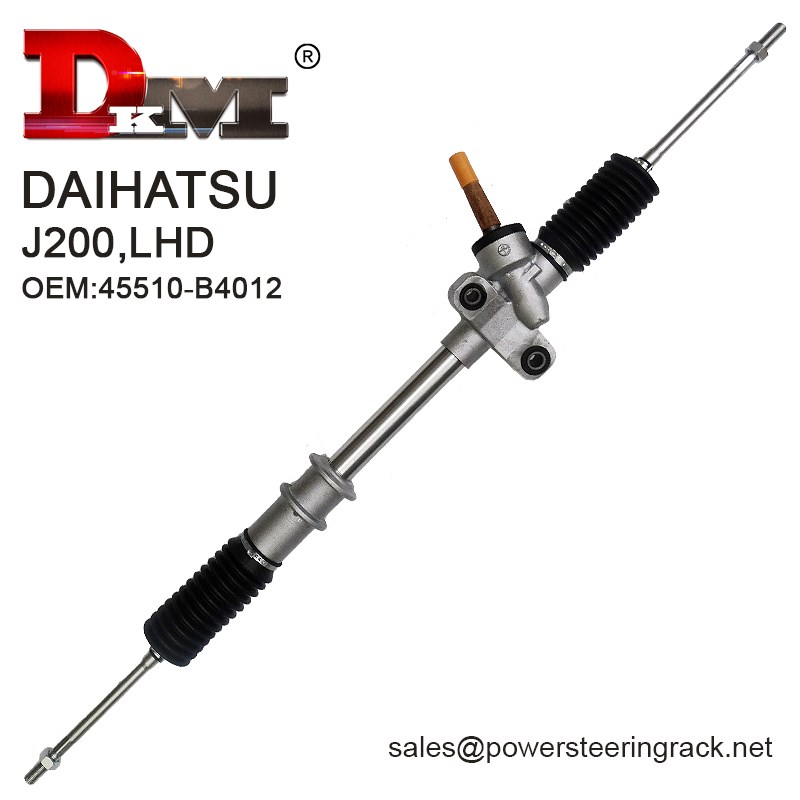
What are the factors affecting steering accuracy?
The accuracy of the steering system mainly depends on the coordination between the rack and the pinion, the state of the steering rod, and the installation accuracy and use conditions of the entire system. The meshing state of the steering rack and the pinion is crucial. Their wear, looseness or damage will directly affect the steering accuracy and lead to inaccurate steering.
Will a damaged steering rack cause inaccurate steering?
Damage to the steering rack is one of the main factors affecting steering accuracy. Here are some of the effects that a damaged steering rack may have on the steering performance of a vehicle:
Inaccurate steering
A damaged steering rack may cause inaccurate steering of the vehicle. This phenomenon is usually manifested as the actual steering angle of the vehicle does not match the expected one after the driver turns the steering wheel, or the steering response is slow. Inaccurate steering not only affects driving comfort, but may also affect the driver's control of the vehicle in an emergency, thereby increasing the risk of accidents.
The main reasons for inaccurate steering include:
● Poor meshing between the rack and the pinion: Wear, deformation or loosening of the rack or pinion will cause poor meshing between the two, so that the rotation of the steering wheel cannot be accurately transmitted to the wheel.
● Rack wear: Long-term use or lack of lubrication will cause wear on the rack surface, and the movement of the rack will no longer be smooth, affecting the steering accuracy.
● Rack deformation: When the vehicle is in an accident or subjected to a severe impact, the rack may deform, causing its movement trajectory to deviate, thereby affecting the steering accuracy.
Increased steering clearance
A damaged steering rack may cause the clearance of the steering system to increase. The so-called steering clearance refers to the difference between the steering wheel rotation angle and the wheel rotation angle when the driver turns the steering wheel. Excessive steering clearance can cause the vehicle to steer slowly, and the driver needs to turn the steering wheel more to achieve the desired steering effect.
The reasons for increased steering clearance include:
● Looseness between the rack and the pinion: If the meshing between the rack and the pinion is loose, part of the steering wheel rotation will be consumed in the gap inside the system instead of being directly transmitted to the wheel, resulting in slow steering response.
● Looseness or wear of connecting parts: Looseness or wear of parts such as steering rods and steering knuckles will also increase the system clearance and affect steering accuracy.
Steering abnormal noise
A damaged steering rack may also cause abnormal noise when steering. Common abnormal noises include metal friction, impact or "clicking" sounds. These abnormal noises are usually caused by wear on the rack surface, wear on the pinion tooth tip, or uneven rack movement.
● Metal friction sound: Wear on the rack or pinion surface can cause metal friction sound, especially when steering.
● Impact or "clicking" sound: Loose or deformed racks may cause the rack to collide when moving, making impact or "clicking" sounds.
Steering instability
A damaged steering rack may cause steering instability, which is manifested as the vehicle cannot maintain a stable direction when driving in a straight line and needs to adjust the steering wheel frequently. Steering instability not only increases driving fatigue, but may also cause the vehicle to lose control when driving at high speeds.
The causes of steering instability may include:
● Uneven rack wear: If the rack wears unevenly at different positions, it may cause uneven force on the steering system, affecting the vehicle's driving stability.
● Deformed rack: A deformed rack cannot guarantee straight-line movement, causing the vehicle to deviate from the route when driving in a straight line.

How to identify whether the steering rack is damaged?
Identifying damage to the steering rack is an important step to ensure the normal operation of the vehicle. Here are several common identification methods:
Observe the steering response
The driver can preliminarily judge the status of the steering rack by observing the steering response of the vehicle. If the vehicle is found to be slow to respond, inaccurate in steering, or requires frequent steering wheel adjustments when steering, it may indicate that there is a problem with the steering rack.
Listen for abnormal steering noises
When the vehicle is turning, if you hear abnormal metal friction, knocking, or "clicking" sounds, it may mean that the steering rack or related components are worn or loose.
Check steering clearance
Increased steering clearance is one of the common manifestations of steering rack damage. The driver can judge the steering clearance by feeling the difference between the steering wheel's rotation amplitude and the wheel's rotation angle. If there is a noticeable gap in the steering wheel's rotation, it may indicate that there is a problem with the steering rack.
Visual inspection
With the help of professional technicians, the steering rack can be visually inspected to observe whether there is obvious wear, deformation or cracks on the rack surface. Through visual inspection and manual inspection, some visible signs of damage can be found.
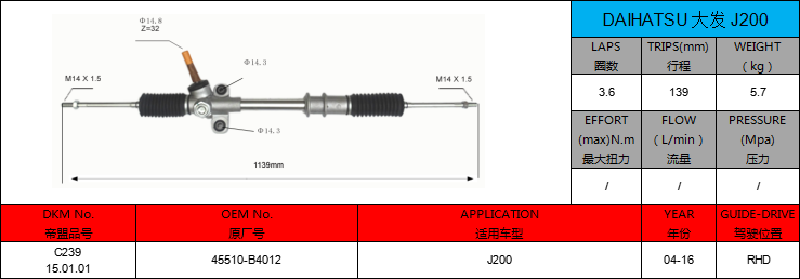
How to deal with steering rack damage?
If it is confirmed that the steering rack is severely worn, loose or deformed, it is recommended to repair or replace it immediately. Compared with other steering components, the damage of the steering rack has a more direct and serious impact on vehicle control, so it should not be ignored. In addition, in order to prevent damage to the steering rack, it is recommended that car owners regularly maintain and inspect the steering system, detect potential problems in time, and take preventive measures. For example, regularly check the lubrication condition of the steering rack to ensure that it operates in the best condition.
During driving, the vehicle should be avoided as much as possible from violent collisions and impacts, especially when passing through potholes or obstacles. These impacts may cause deformation of the steering rack or damage to other components, thus affecting the normal operation of the steering system. In addition, the lubrication of the steering rack has an important impact on its life and performance. It is recommended to use high-quality lubricating oil and replace it regularly to prevent wear and rust on the rack surface.

